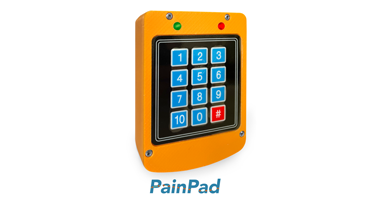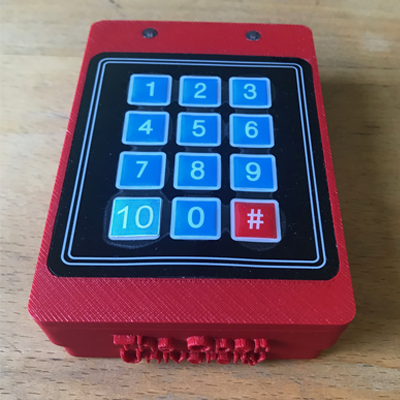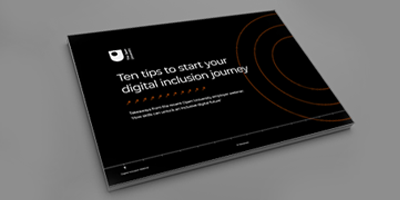You are here
- Home
- Improving the accuracy of pain data to help patients on their road to recovery through the PainPad
Improving the accuracy of pain data to help patients on their road to recovery through the PainPad

The traditional method of tracking patient pain through a written diary entry has proved to be inaccurate, so Professor Blaine Price and Dr Daniel Gooch have created a new efficient way for patients to conduct more frequent and accurate pain readings through a device known as the PainPad.
Developed along with Professor Oliver Pearce, consultant orthopaedic surgeon at Milton Keynes University Hospital (MKUH), Professor Price and his team of engineers have designed a successful and accessible tool to support the improvement of patient care. Professor Pearce recently shared his experiences working with the OU HCI experts on The Open University’s (OU's) webinar on digital inclusion.
Professor Price and Dr Gooch are co-Directors of the OU's Digital Health Lab where they work with clinicians to utilise computing technology and machine learning to improve health and wellbeing.
The PainPad is a physical device which allows patients to monitor their pain levels which ultimately gives clinicians a better understanding of their pain experiences which can help achieve better healthcare outcomes. Keeping pain levels under control can be an important factor in early discharge and the PainPad is improving the quality of pain data which is helping patients on their road to recovery.
The existing model of patients keeping diaries at home is not practical as they are often incomplete due to patients forgetting to fill them in, or they are back-filled from memory, which can result in inaccuracies.
As well as helping out-patients at home, the main use of PainPad so far is to save time for nurses. In-patients (after joint surgery, for example) can take a participatory role in their own care, so it erases the need for nurses to frequently monitor patient pain levels.
Professor Pearce explained in the webinar: “For the PainPad, an innovative new digital device for pain we made sure we included patients, nurses, and pain specialist nurses in the design process because we wanted it to be a useful tool.”
To ensure accuracy, the PainPad reminds the patient at the programmed interval to enter their current pain score by playing a tune and flashing its LED lights. The pain score is entered by pressing one of the 11 buttons numbered from 0 (no pain) to 10 (worst pain imaginable) which uses the well validated Numerical Rating Scale. The timestamped data is immediately transmitted via the hospital Wi-Fi network to a server along with the patient’s hospital record number. This data can then be presented to clinicians on a dashboard or longer-term data over multiple patients can be extracted for research purposes. There is a current project to send the data directly into the observations on the patient’s electronic patient record. We are also about to roll-out an app version of the PainPad so patients can use their own phone or tablet to record pain in hospital and at home.
Professor Price highlighted the impact of the development:
“This work is an important advancement in our understanding of the pain levels being experienced by patients. The development of the PainPad is helping to transform patient care by keeping control of patient care levels which in turn is supporting early discharge.
“Not only is the PainPad helping those directly suffering but it’s designed to help to save precious nursing time and improve the accuracy of pain monitoring, making the healthcare process run more efficiently.”

As the NHS is the country’s biggest employer, it’s essential to also design inclusivity into the devices that staff use. It can make them happier, keep them longer in their jobs, and reduce sick leave – all of those will lead inevitably to financial benefits too.
We’re expanding use of the PainPad now to include children, but they have completely different wishes and needs. Are ten buttons too many? Does it have to have smiley faces on? So we’ll make sure we include them in our workshops, as part of that design process.
Professor Blaine Price
Digital Health Lab co-Director, The Open University
The PainPad is part of the OU’s Living Well theme under the Open Societal Challenges programme which aims to drive research to address crucial challenges facing people across the globe.
You might also like...
Find out how we can help your organisation
Please contact us to speak to one of our business team advisors.
Not on our mailing list?
Sign up to receive regular emails that are full of advice and resources to support staff development in your organisation.


